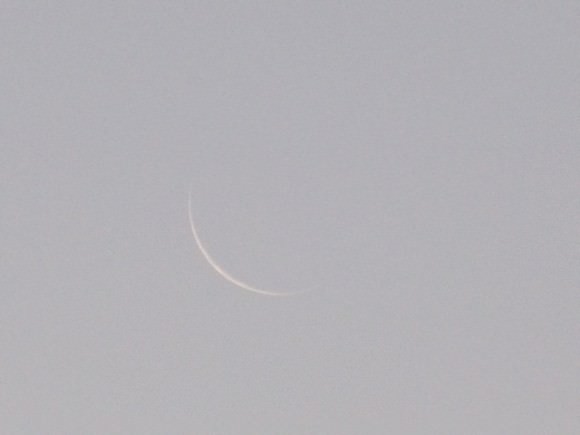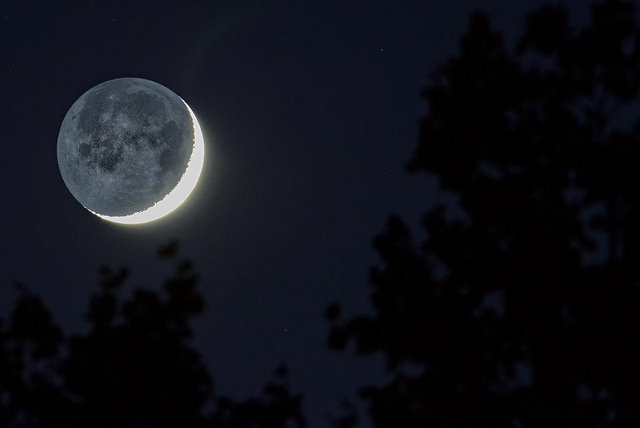Up for a challenge? Some of the toughest targets for a backyard observer involve little or no equipment at all. Northern hemisphere Spring brings with it one of our favorite astronomical pursuits: the first sighting of the extremely thin, waxing crescent Moon. This unique feat of visual athletics may be fairly straight forward, requiring nothing more than a working pair of Mk-1 eyeballs… but it’s tougher than you think. The angle of the evening ecliptic in the Spring is still fairly high for mid-northern latitudes, taking the Moon up and out of the weeds when it reaches waxing crescent phase.
Continue reading “Astro-Challenge: Spotting Slender Moons”Black Moon: Why the New Moon on February 18th is Special
Did you hear the one about last month’s ‘supermoon?’
Yeah, we know. The hype was actually for an event that was less than spectacular, as it revolved around the first New Moon of 2015 on January 20th. Said suspect Moon was touted as ‘super’ (we prefer the quixotic term proxigean) as it occurred 18 hours prior to perigee.
Not that the first lunar perigee of 2015 was an especially close one in time or space at 359,642 kilometres distant. Is every New and Full Moon now destined to become branded ‘super’ in the never ending SEO quest to get eyeballs on web pages?
But wait, there’s more. We’ve noticed as of late that another popular term is creeping into the popular astronomical vernacular: that of a ‘Black Moon’.

We’ve written lots about Moons both of the Black and Blue variety before. We’ll also let you in on a small secret: astronomers rarely sit around observatories discussing these Moons, be they Blue, Black or Super. At most, astronomers note the weeks surrounding New as the ‘Dark of the Moon,’ a prime time to go deep for faint objects while the light polluting Moon is safely out of the sky. And yes, terms such as ‘Super’ or ‘Black Moon’ have dubious roots in astrology, while the term Blue Moon comes down to us via a curious mix-up from Sky and Telescope and the Maine Farmer’s Almanac.
Simply put, a Black Moon is the New Moon version of a Blue Moon, and is either:
- A month missing a Full or New Moon… this can only occur in February, as the lunar synodic period from like phase to phase is 29.5 days long. This last occurred in 2014 and will next occur in 2018.
- The second New Moon in a month with two. This can happen in any calendar month except February.
- And now for the most convoluted definition: the third New Moon in an astronomical season with four.
We bring this up because the February 18th New Moon is ‘Black’ in the sense that it meets the requirements expressed in rule 3. The fourth New Moon of the season falls on March 20th, just 13 hours before the northward equinox on the same date.

Such are the curious vagaries of the juxtaposition of the lunar cycle on our modern day Gregorian calendar. Unfortunately, this doesn’t mean you’ll win the lottery or be lucky in love: any Earthly woes are strictly your own affairs to deal with, Black Moon or no. Continue reading “Black Moon: Why the New Moon on February 18th is Special”


